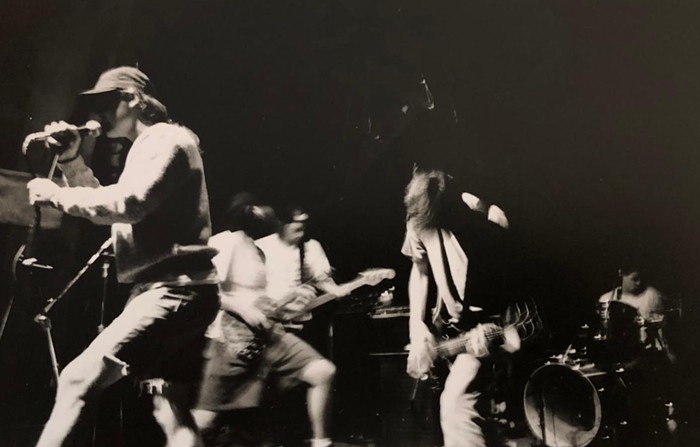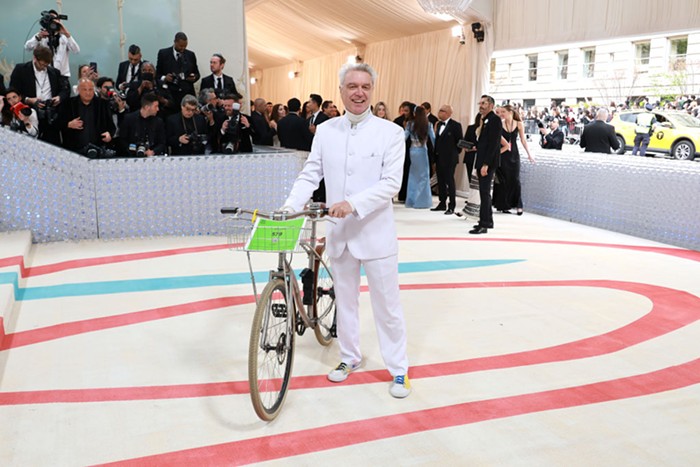In the history of music, the rumble in the jungle of Paris in 1913 was the uproarious premiere of The Rite of Spring, with music by Igor Stravinsky and dance by Vaslav Nijinsky, which has become a fetish object whose spirit has departed it. The music is performed, recorded, and soundtracked so regularly that it is now both familiar and revered, the subject of scholarly conferences such as the recent one at the University of North Carolina—"Reassessing the Rite"—written about by Alex Ross in the New Yorker, who sums up contemporary opinion that it was not so much the music of Stravinsky but the "raw stomp of Nijinsky's choreography" that was "the main cause of the bedlam." "Still," Ross writes, "the Rite remains incomparably vital." Maybe not so incomparably. The year before the premiere of the Rite, a piece by Arnold Schoenberg called Pierrot Lunaire drew the line of modernism even more starkly—and Pierrot has never graduated into acceptance. Nobody has a neutral reaction to the eccentric Pierrot. Seattle Symphony is featuring it in a new series of late-night lobby concerts of unfamiliar works—more on this in a moment—in February.
Pierrot is the seething, expressionistic melo- drama of the mad wanderings of a moonstruck Pierrot, a version of the character from the Italian commedia dell'arte tradition. It's a male role sung by a woman, the part calling for a soprano. "Black gigantic butterflies killed the shining sun," he-and-she sings, in a cycle of poems with titles including "Beheading," "Vulgarity," "A Faded Laundress," and "O Ancient Scent from Fabled Times." But it's not singing exactly. Schoenberg invented a style called Sprechstimme, or sing-speaking, which the first American singer to tackle the piece described as "something between a croon and a moan."
"The most ear-splitting combination of tones that ever desecrated the walls of a Berlin concert hall," one critic wrote at the Berlin world premiere on October 16, 1912. There was whistling and at least one person laughing and jeering. Yet another witness declared it "an unqualified success."
It tore New York down the middle when it arrived nine years later, at the (wonderfully named) Klaw Theatre. It "disrupted families, severed lifelong friendships, incited critics to unbrotherly remarks about one another, and filled whole pages in the Sunday music sections of the newspapers," Lawrence Gilman wrote. The New York Times' morning-after reviewer wrote, "There were other compositions, also said to be musical, associated with it on the program" (emphasis mine). More critical response from New York: "To many the music is an indelicate sort of intolerable ugliness, lacking in the first elements that make music. To others it was the evangel of a new art, tidings of great joy."
Stravinsky called Pierrot "the solar plexus as well as the mind of 20th-century music." But when WNYC broadcast the first recording of it years later, Mayor Fiorello La Guardia hated it so much, he called in and had it taken off the air.
Underneath all the drama is the continuo of Pierrot's lasting influence. It has inspired Stravinsky, Ravel, Boulez, Björk. Its innovative instrumental lineup—the first chamber ensemble to mix strings and woodwinds with piano—became the basis of new-music groups and so popular that it's referred to simply as "the Pierrot ensemble." It continues to generate new interpretations, most recently Pierrot Lunaire: The Butch Dandy, a German film version with a transgender bent (in post-production, IMDb states).
Schoenberg wrote it at the height of his expressionist period, before he invented the 12-tone system but had ventured far into atonality, or the lack of a key. Pierrot came three years after Erwartung, the already pretty wild 30-minute mad scene Seattle Opera presented in 2009. And some say Pierrot takes atonality to its limit, pointing out that Schoenberg wrote only a single piece between 1912 and 1920, having traveled so far into the abyss.
Because Schoenberg was a numerologist and Pierrot was his Opus 21, he adapted "thrice-seven" of the 50 poems from Albert Giraud's 1884 Pierrot Lunaire cycle. He littered the piece with seven-note motifs. The ensemble with conductor is seven people.
His instructions? That the musicians perform with a "light, ironical, satirical tone." The singer should not "interpret." All of which makes for an uncanny 40 minutes or so.
As mentioned, February's Pierrot concert is the continuation of Seattle Symphony's new series of late-night concerts in Benaroya's lobby. The first, in October, sold out, and it was great. The musicians were all on the floor of the lobby, and the audience wandered at will between different floors to sample different acoustics, stretched out on pillows, lined the stairs, perched on stools sipping drinks. This is your new symphony, courtesy of new music director Ludovic Morlot and new executive director Simon Woods. It breathes! ![]()



















